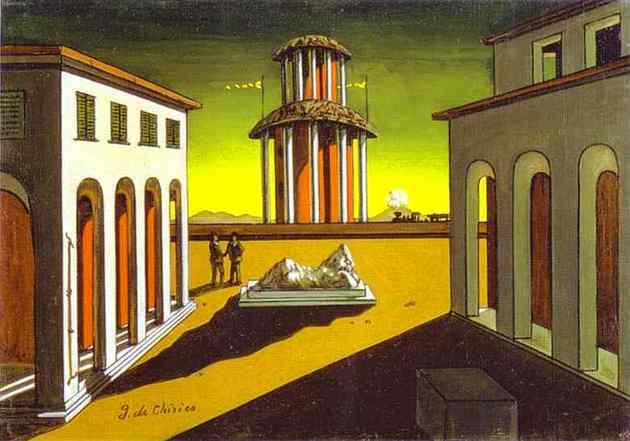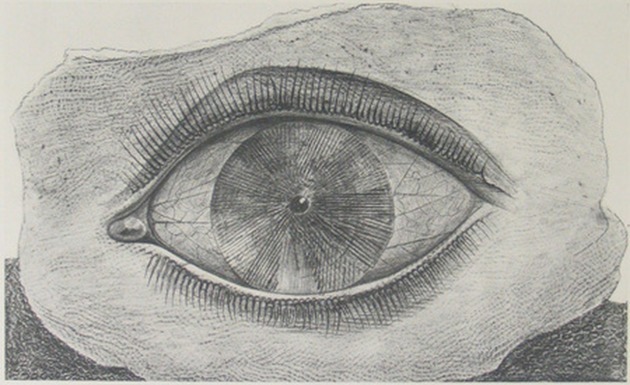Surrealism was one of the European artistic avant-gardes that emerged in Paris at the beginning of the 20th century.
This movement originated in reaction to the rationalism and materialism of Western society.
Surrealist art was not restricted to plastic arts, so it also influenced other artistic manifestations: sculpture, literature, theater and cinema.
Origin of Surrealism

In Europe, the period between the two wars (1918-1939) was known as "the crazy years". Thus, uncertainty about the predominance of peace led to the desire to "live only in the present".
It was in this period of dissatisfaction, imbalance and contradictions that several artistic movements emerged, aimed at a new interpretation and expression of reality.
These movements became known as "European vanguards". Surrealism was one of these currents and had Dadaism and the metaphysical painting of Giorgio de Chirico (1888-1978) as an indispensable precedent.

André Breton (1896-1966), French writer and former Dada participant, broke with the leader of the Dada movement Tristan Tzara.
With that, he launched in Paris, in 1924, the Surrealist Manifesto, which brought to the world a new way of looking at art. According to him, the term consists of:
SURREALISMO, s.m. Psychic automatism in a pure state, through which it is proposed to express, verbally, in writing, or by any other means, the functioning of thought. Saying of thought, suspending any control exercised by reason, oblivious to any aesthetic or moral concern.
In the manifesto, the surrealist principles are presented, among them the exemption from logic and the adoration of a superior reality, called "wonderful".
That same year, the first issue of the magazine circulated The Surrealist Revolution, which brought together all the means of artistic expression, with the ostensible exclusion of music.
Main characteristics of surrealism
In a simplified way, we can list the following characteristics of this artistic aspect:
- free thought;
- spontaneous expressiveness;
- influence of psychoanalytic theories;
- creation of a "parallel reality";
- creating unreal scenes;
- appreciation of the unconscious.
Surrealism proposes the valorization of fantasy, madness and the use of automatic reaction. In this perspective, the artist must let himself be carried away by the impulse, recording everything that comes to mind, without worrying about logic.
Surrealist artists aimed to use the potential of the subconscious and dreams as a source for creating fantastic images.
Thus, the fine arts and literature were seen as a means of expressing the fusion of dreams and reality in a kind of absolute reality, a "surreality".
At the same time, the study of psychoanalysis was under development - mainly by Sigmund Freud - which came to significantly influence surrealism.
Directions of Surrealism
In painting, Surrealism took two directions: surrealist painting figurative and the abstract.
In both, he adapted the techniques of automatic writing of surrealist poets. The aim was to free the mind from conscious control and produce a flow of ideas from the subconscious. These works were abstract or figurative.
In another perspective, surrealism was based on elaborate and meticulous reconstructions of a dream world, where objects were placed in an unexpected juxtaposition.
Know more about:
- figurative art
- abstractionism
Main Artists and Works of Surrealism
Surrealism had some prominent names, including:
1. Max Ernst

In 1925, the German painter Max Ernst (1891-1976) - before Dada - invented the technique fleet, a word that in French means "to rub".
In this method, the artist rubs a pencil (or other material) on a paper over a textured surface. Thus, images emerged and were used as they appeared, or served as the basis for a new design.

The artist also used the decal, in which ink is placed on surfaces such as glass or metal and pressed onto a canvas or paper support. The resulting shapes were then creatively crafted.
2. Joan Miró

The Spanish painter Joan Miró (1893-1983), in his work "Harlequin Carnival(1924-25), crossed the line between the observation of the "external model" and symbols that flowed from the subconscious.
Although based on drawings made in a state of hallucination, its composition is highly organized through the intervention of conscious control.
An artist who was influenced by Miró was the American Jackson Pollock (1912-56).
3. René Magritte

The Belgian painter René Magritte (1898-1967) rejected the supposed spontaneity of automatism as false.
He started to work with images that, at first sight, seemed conventional, but which he gave a bizarre character through overlapping.
4. Salvador Dali

Born in Spain, the painter Salvador Dali (1904-1989) became an official member of the surrealist group and gave it new impetus with his method of paranoid activity. He is certainly the most remembered artist when it comes to surrealism.
Dalí was interested in abnormal mental conditions and, in particular, in hallucinations. His strange images were portrayed in a way that resembled color photography.
To learn more about the frame shown here, read: the persistence of memory.
Surrealism in Brazil

In Brazil, Surrealism exerted considerable influence on the Modernist movement. The writer Oswald de Andrade was one of the greatest exponents.
In your Anthropophagous Manifesto, in the novel Seraphim Ponte Grande and in the pieces The man it's the horse and the dead, we can see elements that are related to surrealist creation techniques.
In addition to literature, this artistic strand also exerted influence on plastic artists: Tarsila do Amaral, Ismael Nery and Cicero Dias.
To learn more about other art movements, read:
- realism in art
- Modern Art
- Impressionism
- Expressionism
- futurism
- Fauvism
- Cubism
Also check out this selection of questions that we have separated for you to test your knowledge: Exercises on European Vanguards.


